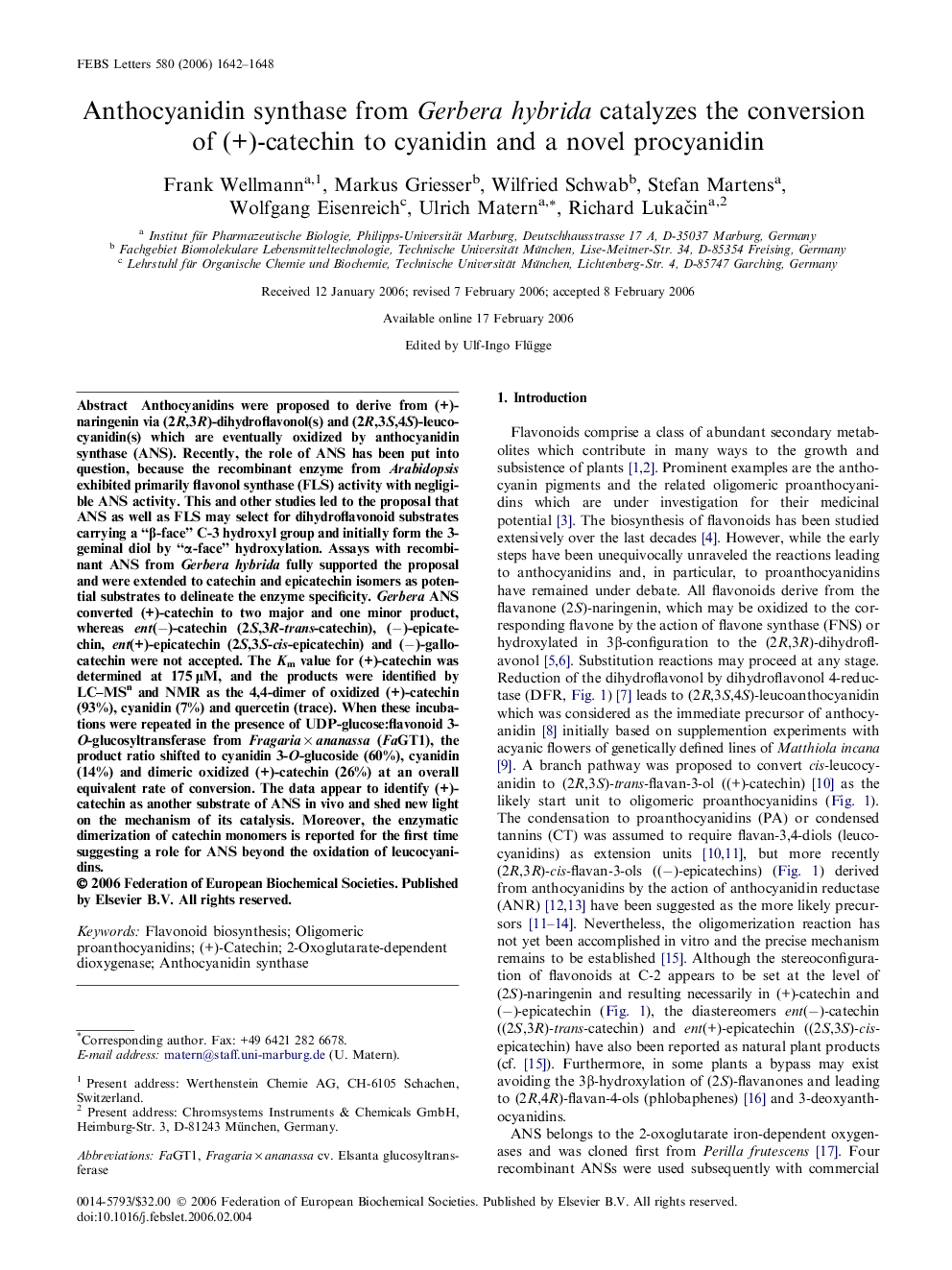| Article ID | Journal | Published Year | Pages | File Type |
|---|---|---|---|---|
| 2052979 | FEBS Letters | 2006 | 7 Pages |
Anthocyanidins were proposed to derive from (+)-naringenin via (2R,3R)-dihydroflavonol(s) and (2R,3S,4S)-leucocyanidin(s) which are eventually oxidized by anthocyanidin synthase (ANS). Recently, the role of ANS has been put into question, because the recombinant enzyme from Arabidopsis exhibited primarily flavonol synthase (FLS) activity with negligible ANS activity. This and other studies led to the proposal that ANS as well as FLS may select for dihydroflavonoid substrates carrying a “β-face” C-3 hydroxyl group and initially form the 3-geminal diol by “α-face” hydroxylation. Assays with recombinant ANS from Gerbera hybrida fully supported the proposal and were extended to catechin and epicatechin isomers as potential substrates to delineate the enzyme specificity. Gerbera ANS converted (+)-catechin to two major and one minor product, whereas ent(−)-catechin (2S,3R-trans-catechin), (−)-epicatechin, ent(+)-epicatechin (2S,3S-cis-epicatechin) and (−)-gallocatechin were not accepted. The Km value for (+)-catechin was determined at 175 μM, and the products were identified by LC–MSn and NMR as the 4,4-dimer of oxidized (+)-catechin (93%), cyanidin (7%) and quercetin (trace). When these incubations were repeated in the presence of UDP-glucose:flavonoid 3-O-glucosyltransferase from Fragaria × ananassa (FaGT1), the product ratio shifted to cyanidin 3-O-glucoside (60%), cyanidin (14%) and dimeric oxidized (+)-catechin (26%) at an overall equivalent rate of conversion. The data appear to identify (+)-catechin as another substrate of ANS in vivo and shed new light on the mechanism of its catalysis. Moreover, the enzymatic dimerization of catechin monomers is reported for the first time suggesting a role for ANS beyond the oxidation of leucocyanidins.
